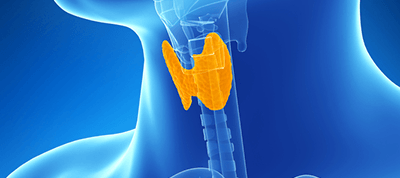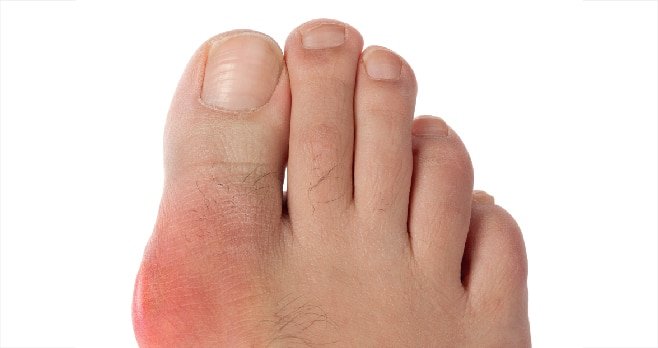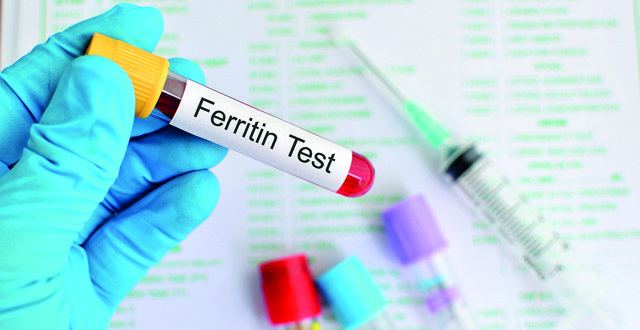More than 225,000 people in Ireland have diabetes. But according to the most recent Healthy Ireland survey, more than 800,000 Irish people are at risk of developing or have type 2 diabetes mellitus.
In 2015 type 2 diabetes accounted for 85-90 per cent of people living with diabetes in Ireland, which is approximately 176,367-186,741 people.
Data from the International Diabetes Federation states that worldwide 425 million adults have diabetes. This is expected to rise to 629 million by 2045.
The figures are alarming and highlight the need for action in tackling the rise in diabetes, both in Ireland and internationally. Furthermore, diabetes is of enormous financial and emotional burden on both the individual and the health service.
The purpose of this article is to introduce the reader to type 2 diabetes and to examine how poor adherence to prescribed medication regimens can negatively impact individuals.
Diabetes mellitus is an endocrine disorder of chronically elevated blood glucose concentration. There are two main categories of diabetes, type 1 and type 2. Type 2 diabetes results from both impaired insulin secretion and insulin resistance.
The prevalence of type 2 diabetes, both nationally and internationally, is at epidemic levels. Additionally, with over 50 years of data little has changed in medication adherence.
Despite excellent medicines available, sub-optimum adherence continues to be a problem of growing concern globally. Medication non-adherence in this article will be explored in two aspects, intentional and unintentional non-adherence.
<h3 class=”subheadMIstyles”>Non-adherence</h3>
Non-adherence to medications is described as a major factor for reduced patient outcomes and increased healthcare costs.
Intentional non-adherence is a behaviour driven by a decision not to take medications. Unintentional non-adherence reflects a person’s ability and skill at medicine-taking, including forgetting, poor manual dexterity, losing medicines or not being able to afford them.
Within chronic disease management, non-adherence increases the prevalence of complications developing, especially among individuals with diabetes. Medication-management among people with diabetes is both complex and time consuming, however, adherence to regimens reduces the risk of complications.
Factors associated with non-adherence to medications are both multiple and complex. The World Health Organisation (WHO) describes factors as being socio-economic, patient-related, therapy-related, condition-related and healthcare team-related.
Other researchers have described non-adherence as having both social and psychological dimensions (Cameron 1996; Dunbar-Jacob et al 2000). Since 2005, non-adherence has broadly been divided into two aspects, intentional and unintentional non-adherence.
In the last five decades, varying terms have been used interchangeably to describe non-adherence, such as concordance, compliance, obedience, observance, conformity, acceptance and persistence.
The WHO has defined adherence as “the extent to which a person’s behaviour taking medication, corresponds with agreed recommendations from a healthcare provider”.
Adherence to prescribed treatment regimens, which is dependent on the self-management skills of the patient, is paramount for positive health outcomes. There are a myriad of ways to measure adherence to prescribed regimens, such as pill counting, self-reporting, electronic recording, medical records, dispensing records, blood or urine assays and medical records. However, for effective measurement it is necessary to use a multifactorial approach to medication adherence. Data shows that non-adherence rates vary from 39-93 per cent in the literature.
Non-adherence can lead to poor patient outcomes. Researchers have identified the positive impact of a one-on-one consultation between the healthcare professional and patient on medication adherence.
Routine is crucial for successful adherence to long-term medication. It has been shown that disruptions to daily routines can lead to non-adherence behaviour. Furthermore, the introduction of telecommunication reminders may further improve adherence.
<div style=”background: #e8edf0; padding: 10px 15px; margin-bottom: 15px;”> <h3 class=”subheadMIstyles”>Medicines for type 2 diabetes</h3> <div> <p class=”BylineMIstyles”><strong>Priscilla Lynch</strong>
</div>
Patients may need to take a combination of two or more medicines to control blood glucose level. There are several different families of oral hypoglycaemic agents (OHAs), including the biguanides, sulphonylureas, A-glucosidase inhibitors, insulin sensitisers (thiazolidinediones), prandial glucose regulators, GLP1s, DPP-4 inhibitors and SGLT2 inhibitors.
<h3 class=”subheadMIstyles”>Metformin</h3>
Metformin is often the first medicine that is recommended to treat type 2 diabetes. It works by reducing the amount of glucose that the liver releases into the bloodstream. It also makes body cells more responsive to insulin.
<h3 class=”subheadMIstyles”>Sulphonylureas</h3>
Sulphonylureas increase the amount of insulin that is produced by the pancreas. Examples of sulphonylureas include: Glibenclamide, gliclazide, glimepiride, glipizide, and gliquidone. Sulphonylureas can increase the risk of hypoglycaemia and may sometimes cause side-effects including weight gain, nausea and diarrhoea
<h3 class=”subheadMIstyles”>Glitazones (thiazolidinediones)</h3>
Thiazolidinedione medicines (pioglitazone) make body cells more sensitive to insulin so that more glucose is taken from blood. They are not often used alone, but are usually used in addition to metformin or sulphonylureas, or both. They may cause weight gain, ankle swelling or bladder cancer. They are contraindicated if the patient has heart failure or a high-risk of bone fracture.
<h3 class=”subheadMIstyles”>Gliptins (DPP-4 inhibitors)</h3>
Gliptins work by preventing the breakdown of a naturally occurring hormone called GLP-1. The gliptins (sitagliptin, vildagliptin or saxagliptin) act to prevent high blood glucose levels, but do not result in episodes of hypoglycaemia. They are not associated with weight gain.
<h3 class=”subheadMIstyles”>GLP-1 agonists</h3>
Liraglutide or exenatide are injections given once or twice a day respectively, which mimic the hormone GLP-1 produced by the gut. Both boost insulin production, reducing blood glucose levels without the risk of hypoglycaemic episodes when used on their own. Both injections also lead to modest weight loss in many people who use the injection. It is mainly used in obese patients who are already on metformin. Exenatide can also be given as an injection once a week.
<h3 class=”subheadMIstyles”>Acarbose (A-glucosidase inhibitor)</h3>
Acarbose helps slow down the rate at which the digestive system breaks carbohydrates down into glucose. However, it can cause diarrhoea, nausea, flatulence and abdominal bloating.
<h3 class=”subheadMIstyles”>Nateglinide and repaglinide (post-prandial regulators)</h3>
Nateglinide and repaglinide stimulate the release of insulin by the pancreas. They are not commonly used, but may be an option for those who have meals at irregular times. This is because they have a rapid, but short-lived onset of action, so are effective when taken just before eating.
They can cause weight gain and hypoglycaemia.
<h3 class=”subheadMIstyles”>SGLT2 inhibitors, such as canagliflozin and dapagliflozin</h3>
SGLT2 inhibitors act by blocking the kidneys’ reabsorption of glucose resulting in more glucose released in the urine and therefore a reduction in blood glucose. They may aid weight loss.
Urinary glucose excretion may be associated with an increased risk of urinary tract infection.
<h3 class=”subheadMIstyles”>Insulin</h3>
Insulin may also be needed in people with type 2 diabetes when the medications listed above are not sufficient to control blood glucose levels or are no longer suitable to use. There are many different types of insulin.
<em>Source: HSE and Diabetes Ireland</em>
</div>
<h3 class=”subheadMIstyles”>Intentional non-adherence</h3>
Intentional non-adherence is described as the non-fulfilment of a new prescription or discontinuation of medication directed by oneself, as opposed to the prescriber. It has been reported that 15 per cent of people do not commence a new script and roughly 50 per cent discontinue therapy within six months of commencement.
According to the WHO, 50 per cent of people fail to adhere to intake of long-term medications, which is alarming. It has also been claimed that 91 per cent of adults aged 57-85 years are on at least one prescribed medication a day. Non-adherence is described as a major factor for reduced patient outcomes and increased healthcare costs.
<h3 class=”subheadMIstyles”>Unintentional non-adherence</h3>
Unintentional non-adherence across chronic disease in literature was initially associated with lower economic status and higher cost implications of prescribing medications and not related to an individual’s knowledge of medications.
But in recent years researchers have questioned the level of unintentional non-adherence and whether it is associated with forgetfulness or carelessness, or the individual’s understanding of the importance of their medication in the management of their illness.
Researchers have also questioned whether it associated with the physiological impact of being on medications and how efficacious the medications actually are in the treatment of their condition.
<h3 class=”subheadMIstyles”>Research gap</h3>
To date there is a paucity of published literature within the Republic of Ireland exploring intentional and unintentional non-adherence in those with type 2 diabetes.
This gap in research was identified in literature exploring intentional and unintentional medication non-adherence in people with type 2 diabetes on oral hypoglycaemia medication within the Irish outpatient department (OPD) setting, among individuals aged 18-59 years.
During a pilot study, participants were invited to participate in the form of semi-structured interviews to gain a richer insight into this phenomenon through a qualitative research framework.
This study aimed to explore the experiences of individuals with type 2 diabetes and their challenges with medication non-adherence.
This in-depth exploration will provide an understanding of the reasons why people do not take their medications as directed, thus having the potential to assist healthcare professionals in managing non-adherence more effectively.
<h3 class=”subheadMIstyles”>Prevalence and economic impact</h3>
The number of people with diabetes mellitus worldwide has more than doubled over the past three decades, according to the WHO.
The prevalence of type 2 diabetes is rapidly increasing globally due to an ageing population, urbanisation and lifestyle choices.
It is estimated that 10 per cent of the total healthcare budget in 2008 was spent on items related to the treatment and management of diabetes. This could rise to 25 per cent by 2040.
The CODEIRE study examined the cost of treating type 2 diabetes in Ireland in November and December 1999.
It suggested that total diabetes spending was made up of a 49 per cent spend on hospitalisation for complications and wages; 42 per cent on drug costs; and 8 to 9 per cent on ambulatory care and attending non-diabetes specialists for diabetes-related complications.
These healthcare cost are not unique to Ireland, as globally non-adherence to medication is costly. In 2005 a US study provided evidence that if medication adherence improved by a mere 20 per cent the economic burden could be reduced by $1,074 per capita with a diagnosis of diabetes.
<h3 class=”subheadMIstyles”>Recommendations for clinical practice</h3>
All healthcare professionals, particularly nurses, have a central role in improving medication adherence through:
<p class=”listBULLETLISTTEXTMIstyles”>Auditing patients regularly as to their medication behavioural patterns, using diaries;
<p class=”listBULLETLISTTEXTMIstyles”>Improved education for patients on treatment modalities and;
<p class=”listBULLETLISTTEXTMIstyles”>Informing patients of any changes in their prescription to ensure that they are made aware as to the mode of action, potential side-effects and consequences to non-adherence with medications.
Healthcare policymakers should produce national evidence-based recommendations to provide uniformity, thus improving patient services.
<h3 class=”subheadMIstyles”>Poor communication</h3>
Data suggests that poor interaction, both in the form of communication and professional interaction, between healthcare professionals and patients can lead to poor adherence.
Studies have shown a lack of understanding as to what medications patients are prescribed and that unless communication improves and a more open, collaborative relationship with equal partnership exists between patients and healthcare professionals, it will continue to lead to non-adherence to medications.
The manner in which education is delivered also impacts on adherence as while the necessary information may be given to patients, it may be misinterpreted or misunderstood and not retained. Collaborative consultations must be a priority to enhance adherence strategies for the future in diabetes management and must be tailored to the individual’s needs.
<h3 class=”subheadMIstyles”>Conclusion</h3>
It is important to gain an insight into the rationale for medication non-adherence in order to help benefit patient outcomes by better addressing their adherence to prescribed medications.
There is no doubt that medication non-adherence is a complex research subject. Significantly, adherence rates remain low.
Awareness is paramount across all healthcare divisions to highlight this enormous issue and also to validate the real concerns of people with diabetes as to why they do not adhere to their prescribed medications and why therapeutic modalities are pivotal in chronic disease management to improve overall healthcare outcomes.
Enhancing medication adherence through collaborative consultations must be a priority to improve adherence strategies for future diabetes management. Consultations must meet the specific and unique needs of each individual in order to help reduce healthcare costs and slow disease progression, thereby resulting in less complications for patients.
<p class=”referencesonrequestMIstyles”><strong>References available on request </strong>
<p class=”referencesonrequestMIstyles”> <div style=”background: #e8edf0; padding: 10px 15px; margin-bottom: 15px;”> <h3 class=”subheadMIstyles”>Up to half of patients do not take medication as prescribed</h3> <div> <p class=”BylineMIstyles”><strong>Priscilla Lynch</strong>
</div>
Up to 50 per cent of patients with serious long-term medical conditions like diabetes do not take their medication or take it incorrectly.
Patients are more likely to take their medication after an acute event, like a heart attack, but as time goes by are less dedicated to taking their medications.
European research has estimated that 20 to 30 per cent of patients to not adhere to medication regimens that are curative or relieve symptoms, while 30 to 40 per cent fail to follow regimens designed to prevent health problems, with results for long-term medication worse at around 50 per cent compliance.
A number of studies highlight poor long-term treatment adherence with breast cancer, osteoporosis and diabetes medication, causing poor outcomes and more costs to the health system.
In its 2003 report on medication adherence, the World Health Organisation (WHO) quoted the statement by Haynes et al that “increasing the effectiveness of adherence interventions may have a far greater impact on the health of the population than any improvement in specific medical treatments”.
A 2011 article in the US <em>Mayo Clinic Proceedings</em> summarised the issue:
Approximately 50 per cent of patients do not take medications as prescribed.
Medication adherence is not exclusively the responsibility of the patient.
Increasing adherence may have a greater effect on health than improvements in specific medical therapy.
Medication-taking behaviour is complex and involves patient, physician, and process components.
Identification of non-adherence is challenging and requires specific interviewing skills.
Solutions include encouraging a ‘blame-free’ environment, opting for less frequent dosing, improving patient education, assessing health literacy, and paying attention to rational non-adherence.
Many helpful web-based resources are available.
</div>









Leave a Reply
You must be logged in to post a comment.